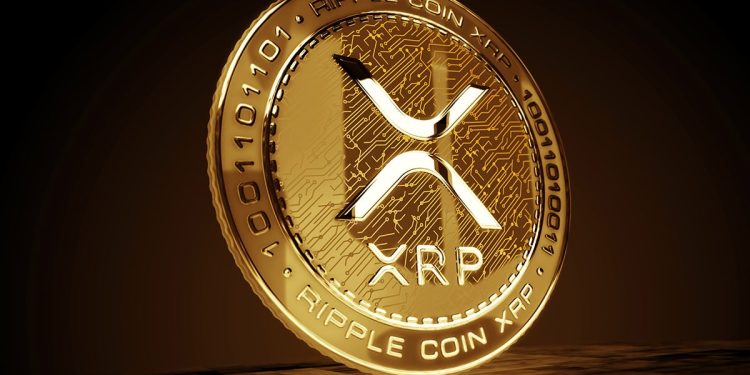TLDR
- Ripple CEO Brad Garlinghouse expects XRP to handle 14% of SWIFT’s transaction volume within five years.
- He believes XRP’s liquidity solutions offer a more efficient alternative to traditional banking infrastructure.
- Ripple aims to shift focus from messaging to real-time liquidity in global cross-border payments.
- XRP’s price recently dropped by 4% and remains over 40% below its January peak.
- Ripple continues to expand its financial tools, including the XRP Ledger and Ripple USD stablecoin.
Ripple’s leadership has made a bold forecast about the future of global payments, projecting XRP’s rise within traditional finance. CEO Brad Garlinghouse expects XRP to claim a significant portion of SWIFT’s liquidity role over the next five years. As regulatory hurdles ease, Ripple aims to expand its influence in cross-border financial transactions through blockchain-based systems.
XRP Targets 14% of SWIFT’s Volume by 2030
Ripple CEO Brad Garlinghouse projected that XRP could handle up to 14% of SWIFT’s transaction volume within five years. He emphasized that XRP’s role in liquidity, not just messaging, will drive its competitive edge in global transfers. This shift highlights Ripple’s intent to offer a blockchain-based alternative to current interbank solutions.
While SWIFT dominates global messaging, its liquidity remains dependent on banks and pre-funded accounts. Garlinghouse noted this as XRP’s opportunity to offer real-time settlement and lower friction. Ripple plans to leverage this by expanding its On-Demand Liquidity (ODL) service globally.
Ripple believes digital assets like XRP can replace current capital-intensive models with more cost-efficient frameworks. This approach aims to reduce liquidity costs for financial institutions using Ripple’s ecosystem. With the SEC’s legal challenge resolved, Ripple now has a clearer path to scale adoption.
$XRP @ripple
Brad says in fives years 14% of Swift. https://t.co/uYm9PqZJ3J pic.twitter.com/GwFNL0yxkC— $NashX (@Nash_Xer) June 11, 2025
Market Dips Ripple Keeps Expanding Reach
XRP price traded at $2.24 at press time, reflecting a 4% drop in the past 24 hours. The token has lost over 40% from its all-time high of $3.80 recorded in January 2025. This decline came despite increased optimism about Ripple’s long-term positioning.
Market performance does not yet reflect the long-term strategic gains Ripple aims to achieve with XRP. However, legal clarity could support gradual growth as institutional adoption progresses. Ripple continues to push adoption through strategic partnerships and its growing financial network.
Despite market fluctuations, Ripple remains focused on integrating XRP into cross-border payment corridors. Its technology stack includes the XRP Ledger and a recently launched Ripple USD stablecoin. These tools aim to simplify remittance and settlement processes for enterprises worldwide.
Ripple Pushes Real-Time Payment Adoption
Ripple’s tools position it to compete with SWIFT, which processed over 50 million financial messages daily in 2024. The company aims to reduce reliance on legacy banking infrastructure using blockchain-based solutions. These offerings include faster settlements, lower costs, and fewer intermediaries.
Ripple has partnered with financial entities to promote XRP’s utility in payment flows, particularly in high-volume regions. Its strategy includes expanding the use of ODL to eliminate the need for pre-funded accounts. This shift could reduce capital inefficiencies and increase real-time liquidity.
Garlinghouse sees the liquidity market as XRP’s biggest opportunity for growth within the traditional financial system. Ripple’s approach focuses on utility, not speculation, to drive sustainable usage. With regulatory obstacles removed, the company seeks broader institutional integration over the coming years.













